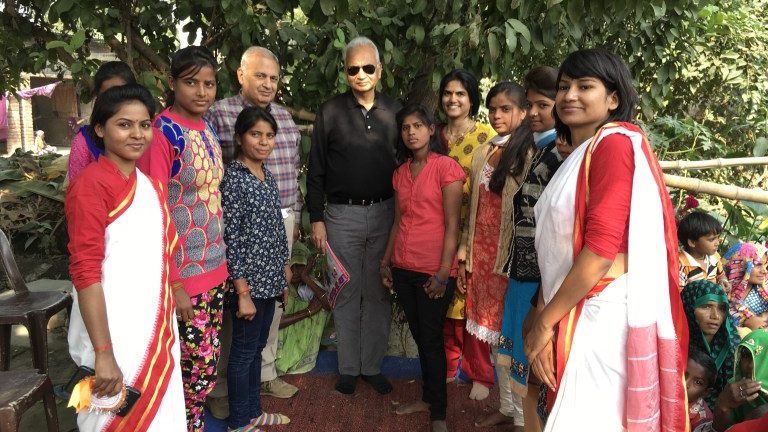Academicians, including those of us within Medicine, are brought up in an environment of publishing, as scientific papers are considered key measurable parameters to assess one’s academic performance. Only a fraction of passionate scientists choose to remain with a primary project and continue their research forward beyond publication to a logical conclusion, truly making a difference in people’s lives.
Being a Urological surgeon, why I should be talking about the neonatal mortality project at Shivgarh, which is barely related with my core specialty? I feel that I must, because this research experience tops the list of my satisfaction scores.
The project I am referring to, Project Shivgarh, has reached much beyond high impact research publications and has transformed communities radically. I have followed it on the ground since 2003, including regular visits to the rural village of Shivgarh, in Uttar Pradesh. The prime mover of this endeavor is Dr. Vishwajeet Kumar Singh, who was also ably joined by his wife Dr.Aarti Kumar, who is equally determined to bring neonatal mortality to the benchmarking levels
Upon my taking charge as the Vice Chancellor of King George’s Medical University, Lucknow (KGMU) in 2003, one of India’s oldest and most prestigious medical schools, I inherited the Johns Hopkins University-King George’s Medical University “Infant Mortality Study” at Shivgarh, Uttar Pradesh. My major contribution was to focus on social change, insistence on cost containment and that it should be possible replicate the outcomes of the study elsewhere. More importantly, it should be based on the premise of empowering the beneficiary population to ensure sustenance of this program long after the project was over.
Scientific Outcomes:
The KGMU-Johns Hopkins group published a cluster- randomized controlled trial, studying community based behavior change management for improving neonatal mortality in Shivgarh, and surrounding rural area. This seminal work was published in Lancet (Ref). The region is comprised of 39 village administrative units with a total population of 104,123. The first intervention group received a well-designed preventive package of caregiving essentials for newborn care, including: birth preparedness, clean delivery and cord care, thermal care to prevent hypothermia, breastfeeding promotion, and danger sign recognition, whereas the control group received the usual services of governmental and non-governmental organizations serving in the area. A second intervention group, in addition to the first group’s neonatal care kit- received liquid crystal hypothermia indicators (ThermoSpot). Neonatal mortality rates were reduced by 54% and 52% for the first and second groups respectively. The effect was so pronounced in the intervention group that he Randomized Controlled Trial had to be discontinued.
The Saksham group at Shivgarh has since expanded its operations into other districts of Uttar Pradesh. They continue to participate in several international collaborations and by publishing several key papers on the same subject, reporting their longitudinal observations.
Ref: Kumar V, Mohanty S, Kumar A, Misra RP, Santosham M, Awasthi S, Baqui AH, Singh P, Singh V, Ahuja RC, Singh JV, Malik GK, Ahmed S, Black RE, Bhandari M, Darmstadt GL; Saksham Study Group. Effect of community-based behaviour change management on neonatal mortality in Shivgarh, Uttar Pradesh, India: a cluster-randomised controlled trial.Lancet. 2008 Sep 27;372(9644):1151-62. doi: 10.1016/S0140-6736(08)61483-X.
ENTHUSIASTIC “AGRIMAS”- A NEW INNOVATIVE CLAN OF YOUNG SOCIAL WORKERS, NOVEMBER 24, 2017
Mahendra Bhandari MD, MBA
drmbhandari.com
